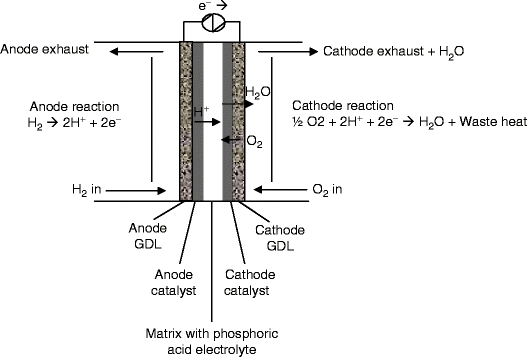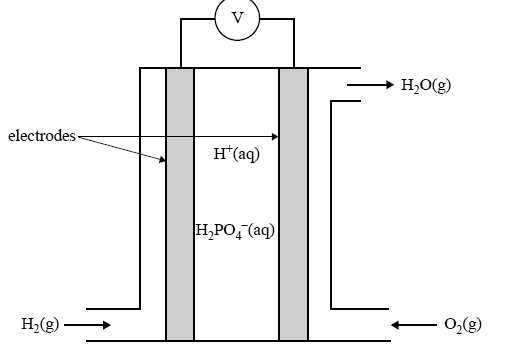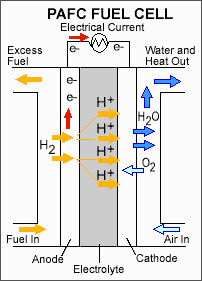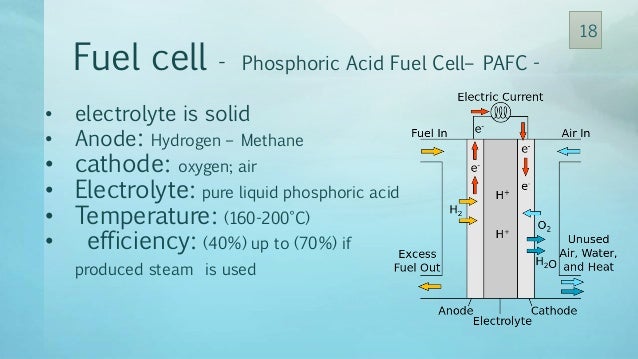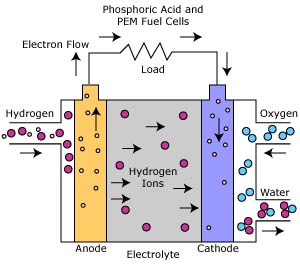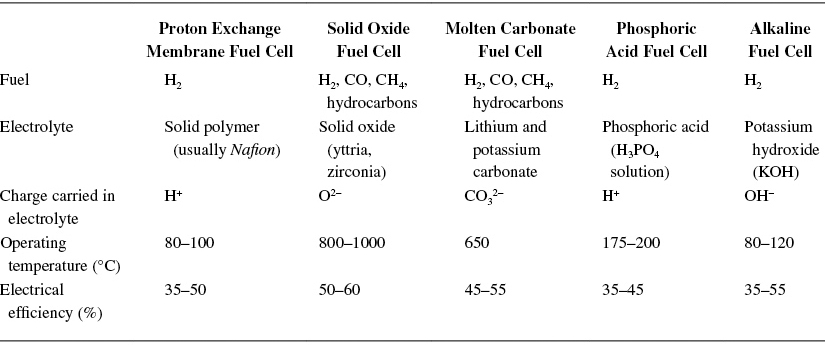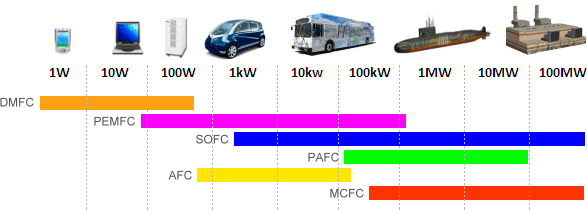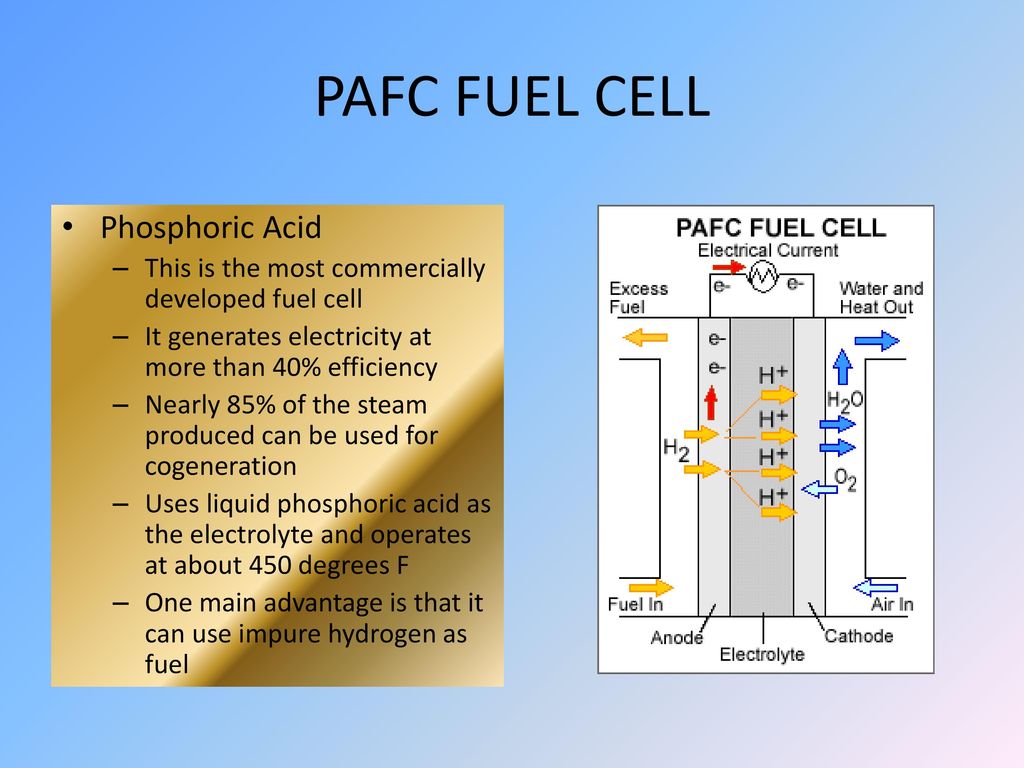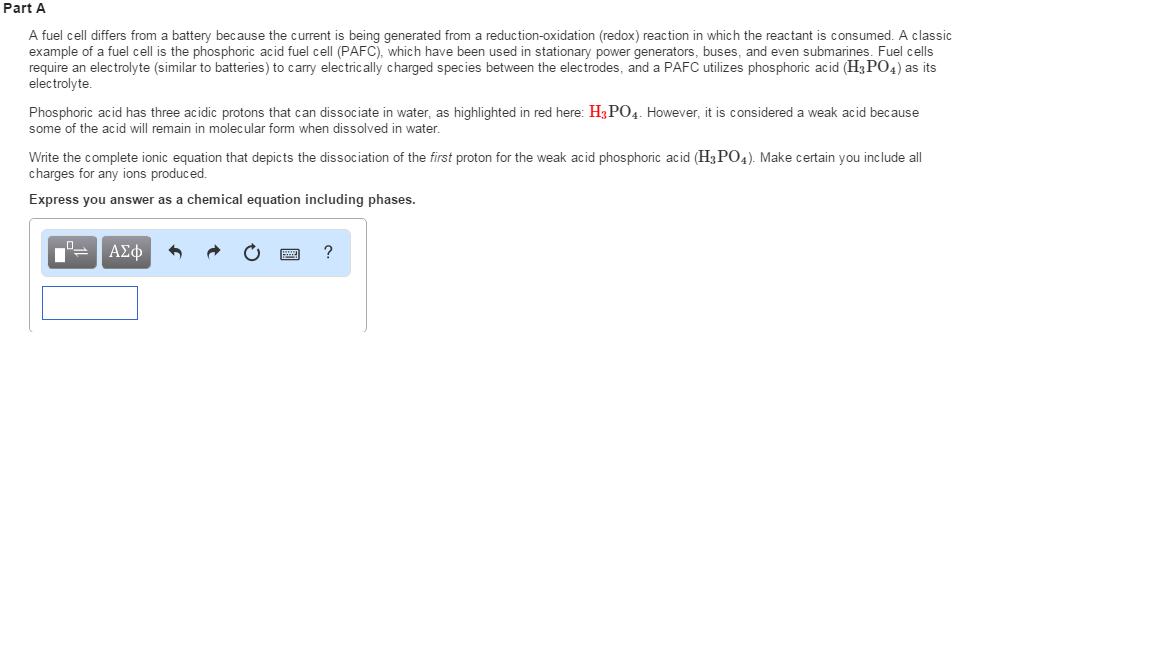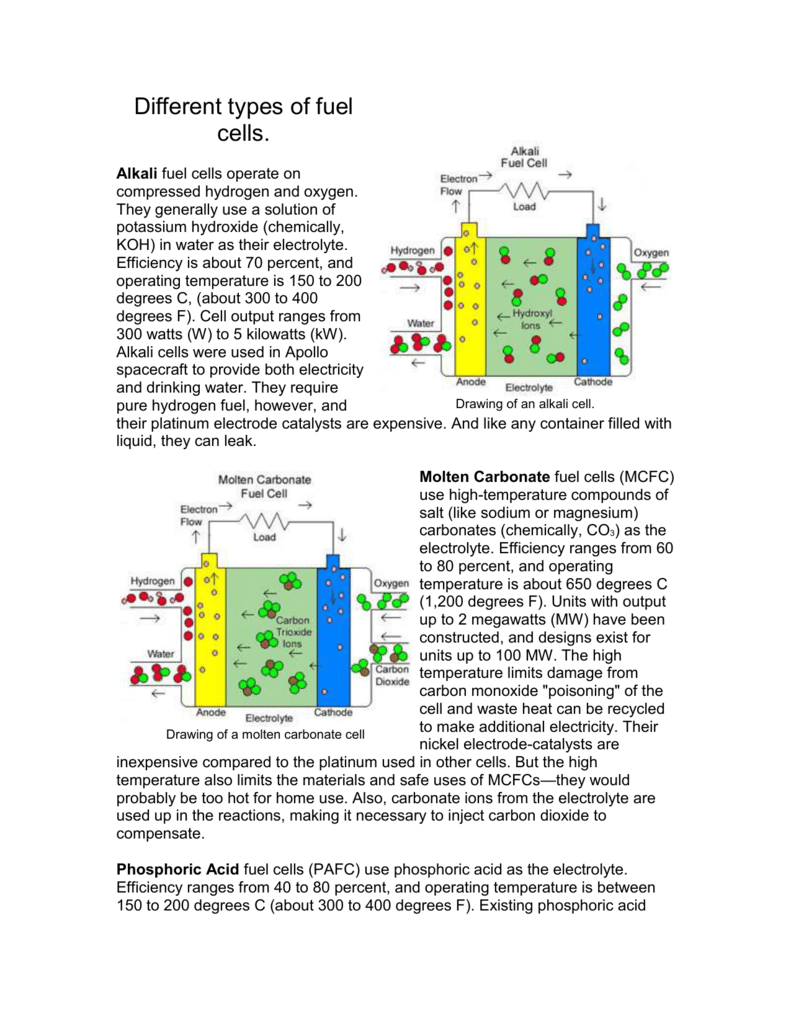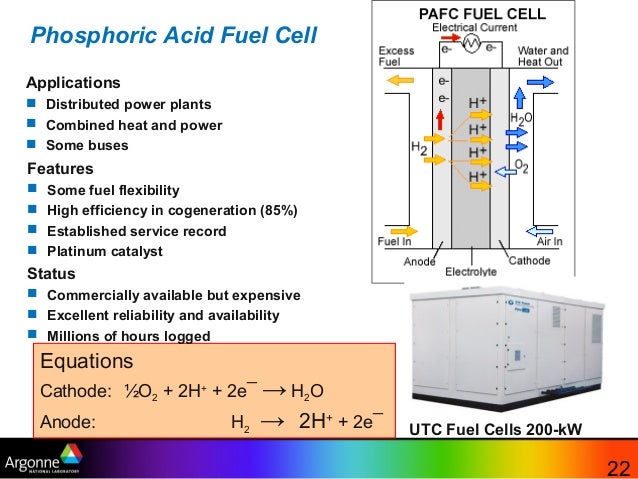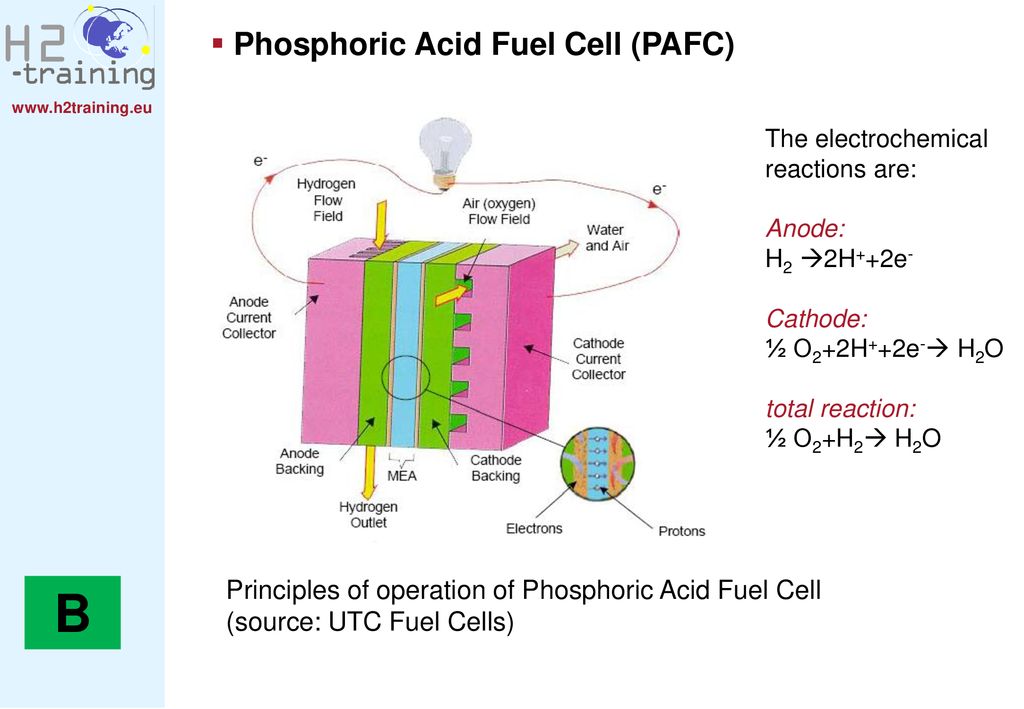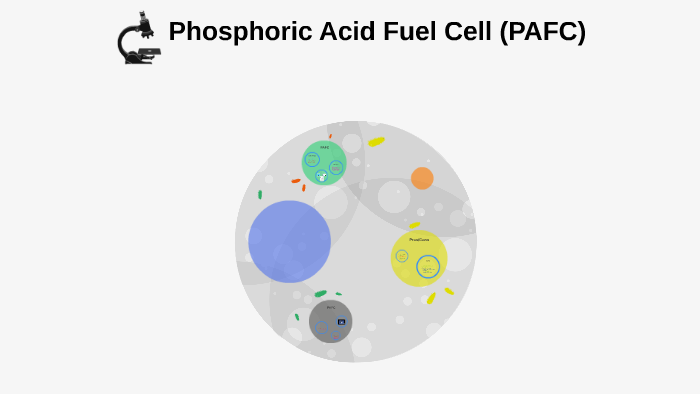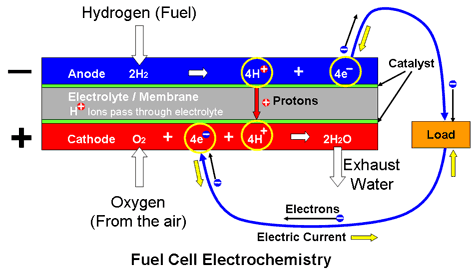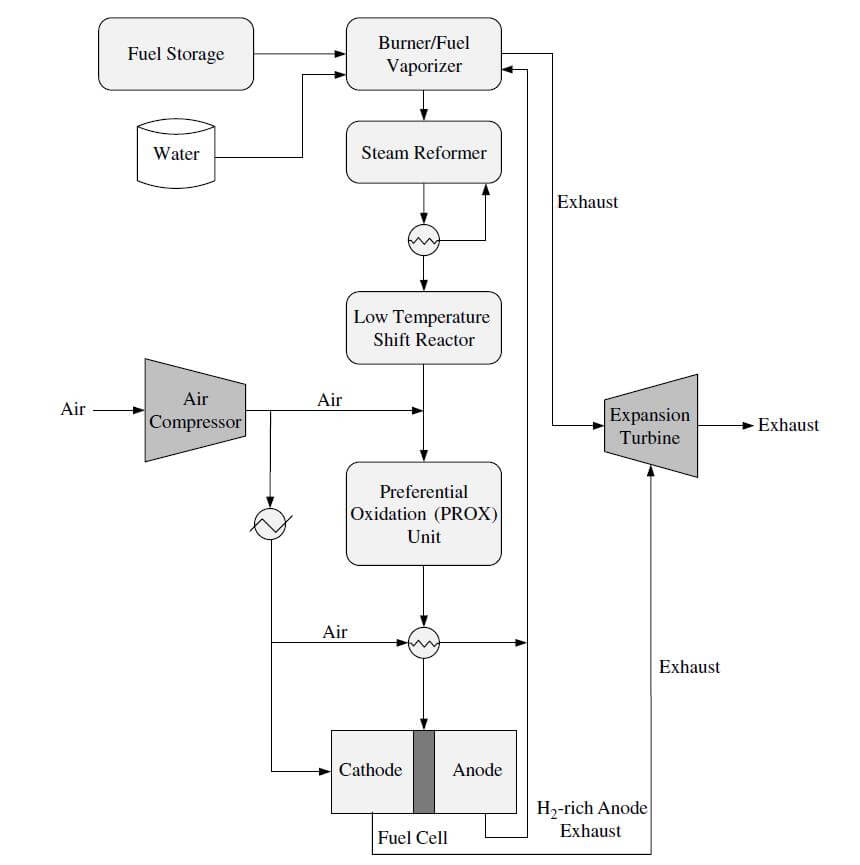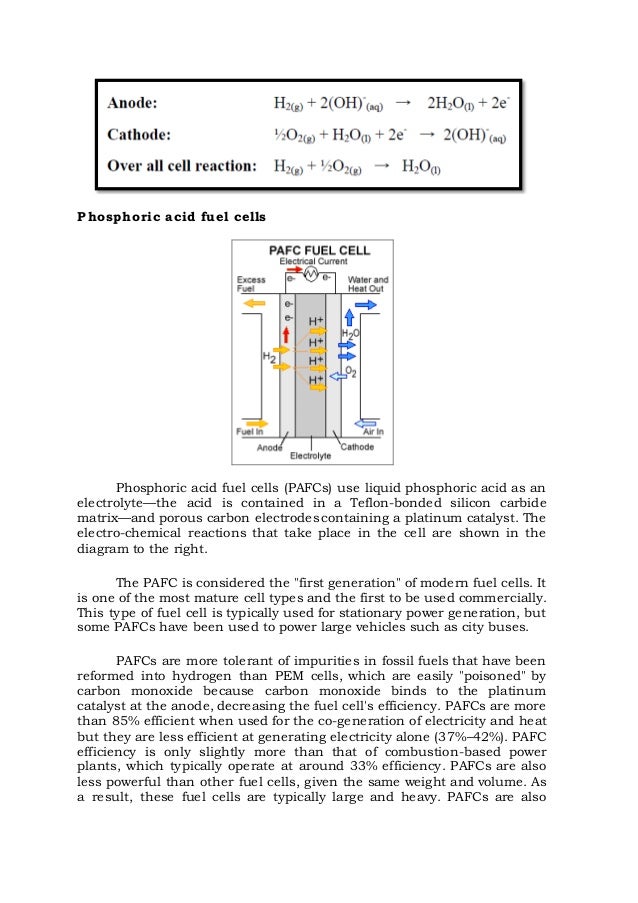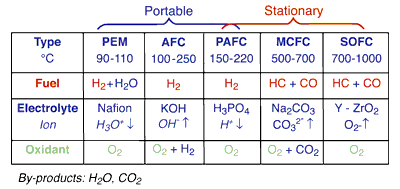Pafc Fuel Cell Reaction

Pafcs use liquid phosphoric acid as an electrolyte and run on hydrocarbon fuel.
Pafc fuel cell reaction. A phosphoric acid fuel cell pafc is composed of two porous gas diffusion electrodes namely cathode and anode juxtaposed against a porous electrolyte matrix. Molten carbonate fuel cells mcfc. The resultant reaction is 2h o2 2e h 2 o. Liquid phosphoric acid pa dispersed in a silicon carbide matrix acts as the electrolyte.
Proton exchange membrane fuel cell pem. The reaction process is similar to pemfcs with hydrogen being removed from the fuel via the assistance of a platinum catalyst. Protons h are transported from the anode to the cathode. Hydrogen is able to permeate the phosphoric acid while electrons are not.
The mcfc works at a relatively high temperature higher than 600 c. A substantial number of pafc systems fueled with natural gas are already in operation around the world. The operating temperature range is generally 160 220 c. The gas diffusion electrodes are composed of a porous substrate carbon or cloth facing the gas feed and a reactive catalyst layer consisting of platinized fine carbon powder facing the electrolyte.
Phosphoric acid fuel cells pafc are a type of fuel cell that uses liquid phosphoric acid as an electrolyte. Unlike other fuel cell technologies pafc is very resistant to poisoning by carbon monoxide and the fuel cell is able to operate with lower hydrogen and oxygen quality. Phosphoric acid fuel cell pafc a type of fuel cell in which the electrolyte consists of concentrated phosphoric acid h 3 po 4. This paper presents the dynamics of a phosphoric acid fuel cell pafc and its associated power electronics.
Owing to the low temperature operation faster response to load transients and short start up time less than a minute the pemfc is suitable for propulsion applications. Excess airflow on the cathode side helps to remove the water resulting from the reaction. They are quite resistant to poisoning by carbon monoxide but tend to have lower efficiency than other fuel cell types in producing electricity. Function and reactions of pafcs.
Developed in the mid 1960s and field tested since the 1970s they have improved significantly in stability performance and cost. The pafc differs from other fuel cell technologies mainly on the basis of the electrolyte used and the method of hydrogen generation for the cell reaction. The overall fuel cell reaction is 2h 2 o2 2h 2 o heat. Phosphoric acid fuel cells pafcs consist of an anode and a cathode made of a finely dispersed platinum catalyst on carbon and a silicon carbide structure that holds the phosphoric acid electrolyte.









